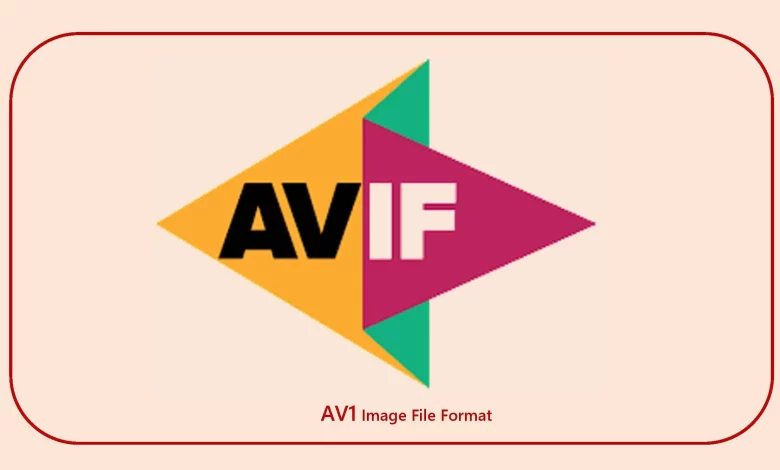AVIF Image Format: An Efficient Compression


The AVIF image format has gradually gained traction in digital media because of its advanced AV1 compression. As a result, it is beneficial to take some time to understand what this new format is and how you can use it for various tasks such as streaming, web development, video editing, file sharing, and more.
In this blog post, we will be providing an overview of what AVIF is and exploring the applications of the format so that everyone can benefit from understanding it better. So let’s dive right in!
Introduction to AVIF Image Format
In the age of digital media, the demand for high-quality images has never been greater. And with more and more technology being developed each day, it’s only natural that our expectations for image quality also increase. That’s where AVIF comes in.
This innovative image format offers many advantages over traditional formats like JPEG and PNG, including better compression and faster loading times. Not to mention, AVIF images are fully compatible with all modern web browsers, ensuring that your images look stunning no matter where they’re being viewed.
Other image conversion formats include BPG (Better Portable Graphics), FLIF (Free Lossless Image Format), WebP (a Google-backed format that offers better compression than both PNG and JPEG, but no support for animation or transparency), and JPEG XR (an updated version of the classic JPEG format that offers better compression than both PNG images and JPEG, but also lacks support for animation or transparency).
So if you’re looking for a better way to showcase your visuals online, consider switching to AVIF.
What is AVIF?
AVIF stands for AV1 Image File Format. It is an open-source, royalty-free image file format with improved compression and visual quality compared to traditional formats such as JPEG and PNG. It uses the same container format built upon ISOBMFF as HEIC, but replaces HEVC with AV1 for compression.
The AV1 video codec was developed by the Alliance for Open Media and served as the basis for this new image format. This file format is designed to provide higher image quality and compression than existing formats while also being supported by most modern web browsers and operating systems.
What is AV1 Compression?
AV1 compression is a high-performance video coding standard that is designed to deliver the best possible video quality, even when bandwidth is constrained. AV1 coding achieves this by using advanced compression techniques and a more efficient algorithm, resulting in better compression efficiency and less data loss.
Is it Possible to Convert any Image into AVIF using Online Tools?
Yes, you can convert any image into AVIF using online tools. Several free and paid online services allow you to upload your image and then convert it into the AVIF format. Some services also let you adjust the compression quality level of the resulting file before downloading it. Some desktop photo editing applications have native AVIF support, so you can save your image as an AVIF file without using an online tool.
Read Also: How to Convert HEIC to JPG – Know Before You Go!
How to Create an AVIF Image File Using a Desktop Application?
To create an AVIF image file, you can follow these steps:


- Choose an image editing software: AVIF support is gradually being integrated into popular image editing software. The image must be encoded with the appropriate software that supports the AVIF format, such as Adobe Photoshop, GIMP, or other image editors.
- Open image in the software: Launch your chosen image editing software and open the image you want to convert to AVIF.
- Export/Save as AVIF: Look for the export or save options within the software. You may find it in some applications under the “File” menu or through specific export functions.
- Select AVIF as the output format: When saving or exporting, navigate the available file format options and select AVIF as the desired format.
- Adjust settings if necessary: The necessary settings must be selected to optimize the image quality and size. This includes selecting a suitable profile, such as a color profile or pixel format.
- Specify the output location: the new AVIF image file should be saved with a proper name and location.
- Export/Save the image: Click the “Export” or “Save” button to generate the AVIF image file. The software will process and save the image as an AVIF file in the specified location.
Following these steps will ensure that your AVIF image file is of the highest quality and meets your requirements.
Reasons for using the AVIF Image Format
In today’s fast-paced digital world, it’s important to use file formats that are both accessible and compatible with a wide variety of devices and platforms. That’s where AVIF comes in. As a relatively new image format, AVIF image format provides several key benefits, making it an appealing choice for web developers and mobile app designers.
One of the biggest advantages of AVIF is its ability to provide high-quality images while keeping file sizes small – perfect for users on the go and accessing content from mobile devices.
Additionally, AVIF image format supports transparency and animations, making it a versatile choice for various use cases. Finally, AVIF is quickly gaining support from web browsers, meaning that it’s easier than ever to incorporate this file format into your online projects.
Advantages of using the AVIF image format
Image quality is everything; whether it’s for social media, websites, or personal use, the quality of the images we share and save is essential. This is where the AVIF image format comes in, providing an incredible way to store high-quality images while significantly reducing their file size.
The benefits of using AVIF are endless, with visually lossless compression and significantly reduced file sizes. Furthermore, AVIF is supported by all modern browsers and operating systems, making it accessible to anyone.
One of the key benefits of AVIF is its support for high dynamic range (HDR) images. HDR images capture a wider range of colors and brightness levels than traditional images, resulting in more vibrant and lifelike images.
However, HDR images tend to be larger in size than traditional images, making them more difficult to use on the web. AVIF’s superior compression capabilities make it possible to use HDR images without sacrificing page load times or bandwidth usage.
So, if you’re looking for a way to enhance your image quality while reducing its size, then the AVIF image format is undoubtedly the way to go.
Potential applications for the AVIF image format
The AVIF image format has the potential to revolutionize streaming media, video games, and virtual reality. With its ability to provide high-quality images with smaller file sizes, AVIF can allow faster loading times in streaming media, making for a smoother and more enjoyable viewing experience.
For video games, AVIF can provide sharper textures and better graphics while remaining lightweight, allowing for better performance overall. In virtual reality, AVIF can create more realistic and immersive environments by providing more detail and clarity. As technology advances, the potential uses for AVIF only continue to grow.
Conclusion
In conclusion, the AVIF Image Format has many advantages over traditional image formats. It offers significant compression with AV1 compression and produces perceived image quality superior to that of JPEG and other popular formats. The distinct advantage is the ability to decrease file size while retaining essential features such as brightness, sharpness, and clarity. Adopting this format comes at no additional cost while considering sustainable development, meaning the benefits are fully realized across all contexts.
With so much momentum building around AVIF adoption, there are many reasons why improving existing imagery or creating new from scratch should become easier by taking full advantage of this new format.
You may also like: How is it possible to convert images into text?




